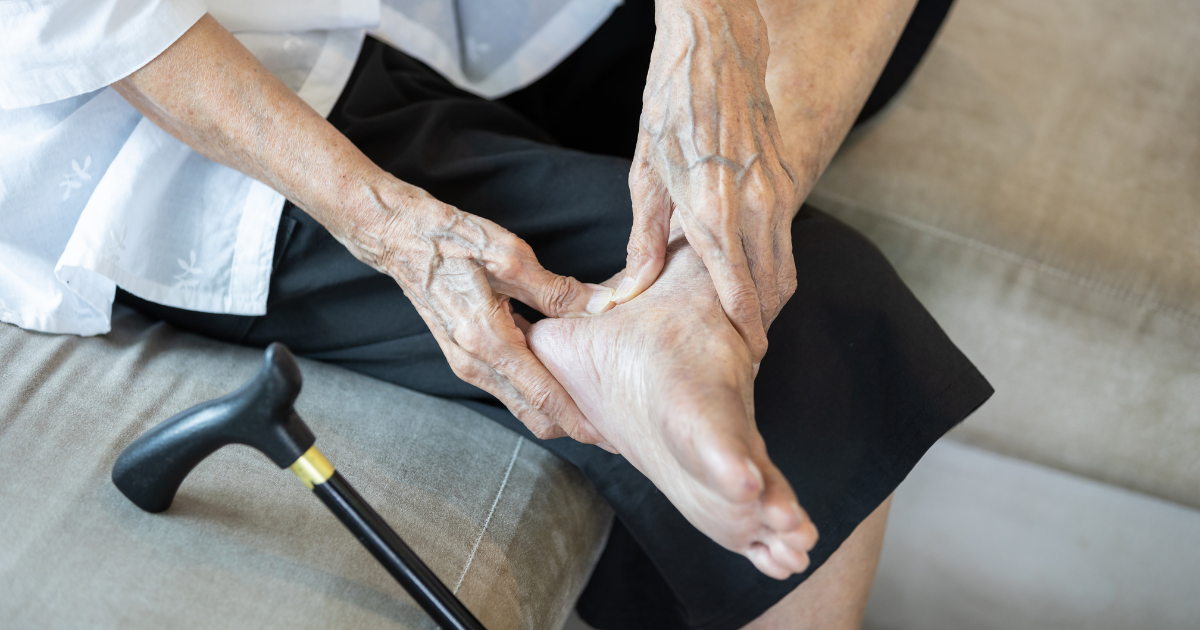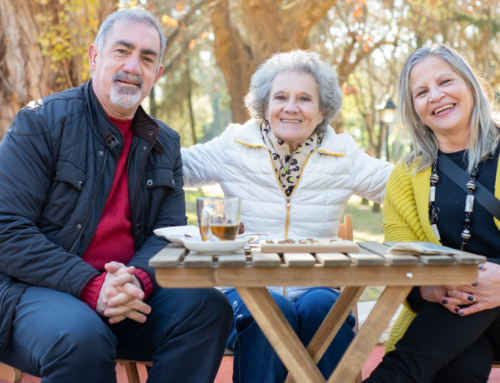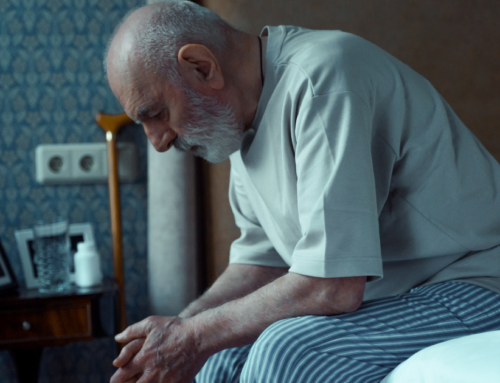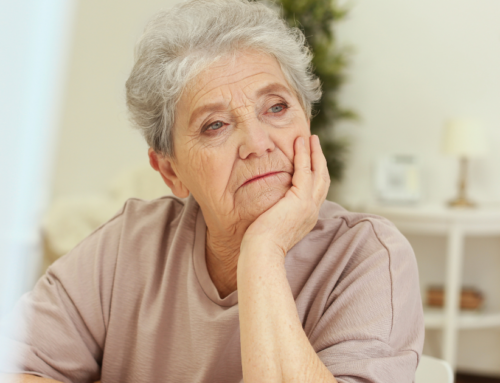28 bones, 30 joints, and more than 100 muscles, tendons, and ligaments. When we are young, all of these perfectly aligned parts of the foot work together to provide support, balance, and mobility. But after 70 or 80 years of carrying our weight around, and years of wearing ill-fitting or inappropriate shoes, (think flip-flops or high heels with pointy toes) our feet start to feel and act their age. Overuse injuries and joint problems become common. Bunions, hammertoes, corns, and callouses; tendinitis and inflammation can occur. Foot pain can lead to poor balance and contribute to a fear of falling. When this happens, the older adult may avoid standing and walking which can lead to other health problems.
Aging feet need extra care. In 8 Essential Senior Foot Care Tips for Improved Health on the DailyCaring website, it states: “Over time, feet flatten and become wider. The fatty padding naturally wears down. That leaves the bones and joints of the feet more exposed to wear and tear. An injury as simple as a bad blister can impair mobility, balance and overall function in older adults. Skin breaks, sprains, neuropathy (a type of nerve damage), and injuries like fractures could be the first domino to fall and lead to a cascade of health conditions that could seriously affect your older adult’s health and well-being.”
As caregivers, we want to help our client or family member avoid these problems. The eight-foot care tips described in the Daily Caring article include:
Keep feet clean
Good foot hygiene helps prevent fungal, viral, and bacterial infections. At night wash feet with warm water, soap, and a washcloth. This is also a good time to do a visual foot inspection.
Moisturize feet
Older skin is delicate, thin, dry, and prone to crack, flake, or tear. Every night lotion should be applied to clean, damp feet. Wearing breathable cotton socks will help lock moisture in longer.
Toenail care
Overgrown toenails hurt and can interfere with wearing closed-toe shoes and walking. However, professional caregivers may or may not be permitted to trim toenails. If you do not know what your certification permits, speak to your supervisor. Before cutting anyone’s toenails, the feet should be soaked in warm water. Soft toenails are easier to clip than hard, brittle ones.
Monitor sores
Many seniors spend considerable time in a chair or on their bed, resting the heels of their feet on a pillow, footstool, or mattress. The pressure on their heels can cause skin irritation and even tissue breakdown. Try placing pillows under their legs so their feet rest suspended in the air without touching anything. Another common location for sores is between the toes. Be sure to check this area regularly.
Wear only properly fitting footwear
Wearing shoes that are too small or too big can cause blisters, corns, and other foot problems. Seniors should wear closed-toe shoes that support their arch and ankles and accommodate their foot width. Wearing only slippers or socks is a fall hazard and should be avoided.
Get medical attention when needed
When feet are inspected regularly, the professional caregiver or family member will notice potential problems before they worsen. The elder may need to visit a podiatrist for evaluation and treatment. They may need nothing more than an insert in their shoe (orthotic) to help support the arch, or a bunion pad or toe separator. Or they may need new shoes.
Address pain
Pain, tingling, numbness, swelling, stiffness, or inflammation in the feet or ankles can be the first sign of a more serious condition such as arthritis or diabetic neuropathy. If any of these symptoms occur, a doctor should be seen right away. As always, professional caregivers should report their observations to their supervisor.
Promote circulation
Circulation slows as we age and ailments like diabetes can speed this process. Reduced circulation in the lower legs and feet can lead to blood clots. Foot massages and elevating the legs when resting can help improve circulation. Some older adults wear compression hose which should only be used if prescribed by their doctor.
Being able to stand and walk is critical for seniors who want to remain mobile and as independent as possible. If your client or loved one resists walking, foot pain could be one reason. Talk to them, look at their feet and act on any concerns you may have. Remember, pain is not a normal part of aging and painful feet could indicate a larger problem.






